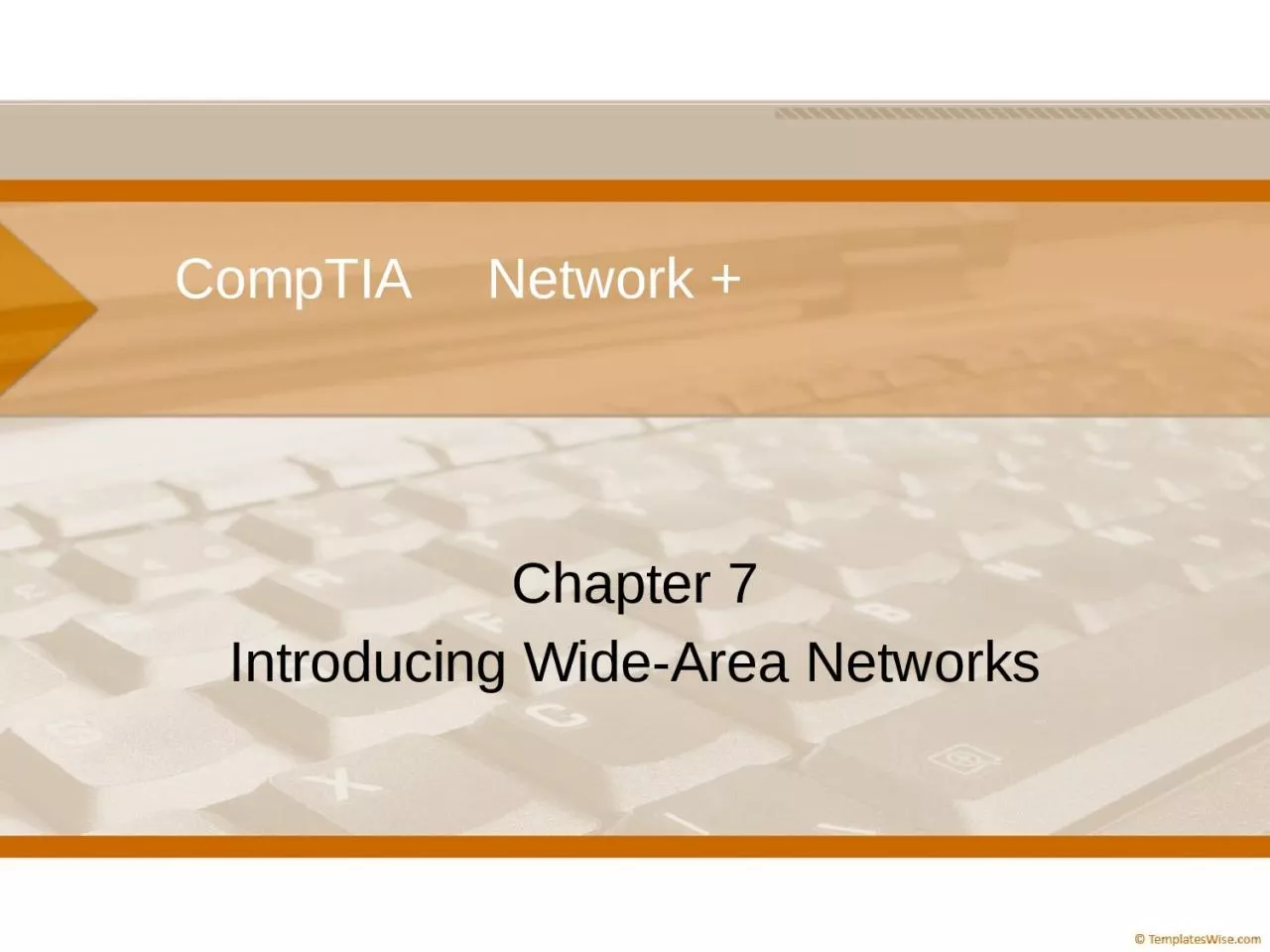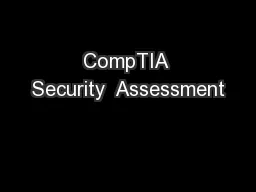PPT-CompTIA Network + Chapter 7
Author : badra | Published Date : 2023-11-08
Introducing WideArea Networks Objectives What are three categories of widearea networks WAN connections How are data rates measured a various WAN technologies Which
Presentation Embed Code
Download Presentation
Download Presentation The PPT/PDF document "CompTIA Network + Chapter 7" is the property of its rightful owner. Permission is granted to download and print the materials on this website for personal, non-commercial use only, and to display it on your personal computer provided you do not modify the materials and that you retain all copyright notices contained in the materials. By downloading content from our website, you accept the terms of this agreement.
CompTIA Network + Chapter 7: Transcript
Download Rules Of Document
"CompTIA Network + Chapter 7"The content belongs to its owner. You may download and print it for personal use, without modification, and keep all copyright notices. By downloading, you agree to these terms.
Related Documents







![[eBOOK]-CompTIA Network+ Study Guide: Exam N10-008 (Comptia Network + Study Guide Authorized](https://thumbs.docslides.com/984338/ebook-comptia-network-study-guide-exam-n10-008-comptia-network-study-guide-authorized-courseware.jpg)
![[READING BOOK]-CompTIA Network+ Certification Kit: Exam N10-007[READING BOOK]-CompTIA](https://thumbs.docslides.com/984963/reading-book-comptia-network-certification-kit-exam-n10-007-reading-book-comptia-network-certification-kit-exam-n10-007.jpg)
![[READ]-CompTIA: CompTIA Security+: SY0-501: Practice Exams SY0-501: 390 Top Notch Questions](https://thumbs.docslides.com/985042/read-comptia-comptia-security-sy0-501-practice-exams-sy0-501-390-top-notch-questions-comptia-security.jpg)
![[READ]-CompTIA Network+: 3 in 1: Beginner\'s Guide + Tips and Tricks + Simple and Effective](https://thumbs.docslides.com/985045/read-comptia-network-3-in-1-beginner-s-guide-tips-and-tricks-simple-and-effective-strategies-to-learn-about-comptia-network-certification.jpg)



